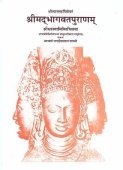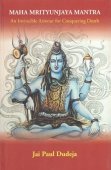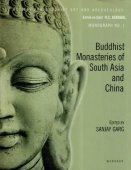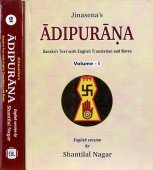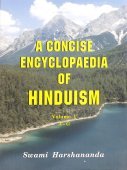Kapila, Kapilā, Kāpila: 50 definitions
Introduction:
Kapila means something in Buddhism, Pali, Hinduism, Sanskrit, Jainism, Prakrit, the history of ancient India, Marathi, Hindi, biology. If you want to know the exact meaning, history, etymology or English translation of this term then check out the descriptions on this page. Add your comment or reference to a book if you want to contribute to this summary article.
In Hinduism
Ayurveda (science of life)
Nighantu (Synonyms and Characteristics of Drugs and technical terms)
Source: WorldCat: Rāj nighaṇṭuKapilā (कपिला) is another name for Gṛhakanyā, a medicinal plant commonly identified with Aloe vera var. chinensis Baker from the Asphodelaceae family of flowering plants, according to verse 5.47-49 of the 13th-century Raj Nighantu or Rājanighaṇṭu. The fifth chapter (parpaṭādi-varga) of this book enumerates sixty varieties of smaller plants (kṣudra-kṣupa). Together with the names Kapilā and Gṛhakanyā, there are a total of twenty-one Sanskrit synonyms identified for this plant.
Veterinary Medicine (The study and treatment of Animals)
Source: Asian Agri-History: Paśu Āyurvēda (Veterinary Medicine) in GaruḍapurāṇaKapilā (कपिला) refers to a “pale-brown” or “tawny” (cow), according to sections dealing with the treatment of elephants (Gajāyurveda or Hastyāyurveda), according to the Garuḍapurāṇa.—The prophylactic, or curative rites, in respect of the upasarga (epidemics out break) among elephants is by means of a śāntikarma (pacifying rite), the worship of Gods and Brahmins and the gift of a kapilā (pale-brown or tawny) cow. A physician while observing a fast shall tie garland of vacā (sweet flag), siddhārthaka (white mustard seeds) around the tusks of an elephant for protecting from attacks of diseases. [...]
Unclassified Ayurveda definitions
Source: Academia.edu: The Nepalese version of the SuśrutasaṃhitāKapila (कपिल) is a legendary Sage, who “is supposed to be the founder of the Sāṃkhya system”, though unanimously considered a mythological being by modern scholars. He is traditionally attributed with the authorship of the Sāṃkhyasūtras, which on its part are without any doubt a later compilation. As far as Ayurvedic literature is concerned, the traces of Kapila become rather scarce. The Sāṃkhya-Kapila is referred to in Ādī 10 on Caraka-saṃhitā Sūtrasthāna 26.8 in the discussion on the classification of tastes.
Source: gurumukhi.ru: Ayurveda glossary of termsKapila (कपिल):—Tawny colour

Āyurveda (आयुर्वेद, ayurveda) is a branch of Indian science dealing with medicine, herbalism, taxology, anatomy, surgery, alchemy and related topics. Traditional practice of Āyurveda in ancient India dates back to at least the first millenium BC. Literature is commonly written in Sanskrit using various poetic metres.
Vaishnavism (Vaishava dharma)
Source: ISKCON Press: GlossaryKapila (कपिल).—An incarnation of Kṛṣṇa who appeared in Satya-yuga as the son of Devahūti and Kardama Muni and expounded the devotional Sāṅkhya philosophy, the analysis of matter and spirit, as a means of cultivating devotional service to the Lord. (There is also an atheist named Kapila, but he is not an incarnation of the Lord.)
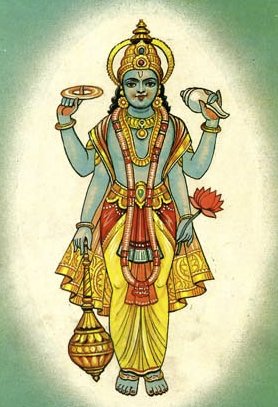
Vaishnava (वैष्णव, vaiṣṇava) or vaishnavism (vaiṣṇavism) represents a tradition of Hinduism worshipping Vishnu as the supreme Lord. Similar to the Shaktism and Shaivism traditions, Vaishnavism also developed as an individual movement, famous for its exposition of the dashavatara (‘ten avatars of Vishnu’).
Purana and Itihasa (epic history)
Source: Wisdom Library: Varāha-purāṇa1) Kapila (कपिल).—One of the seven sons of Jyotiṣmān, who was a son of Priyavrata, according to the Varāhapurāṇa chapter 74. Priyavrata was a son of Svāyambhuva Manu.
2) Kapila (कपिल) is the name of a mountain situated at lake Asitoda and mount Vipula, according to the Varāhapurāṇa chapter 75. The Vipula mountain lies on the western side of mount Meru, which is one of the seven mountains located in Jambūdvīpa.
3) Kapila (कपिल).—Name of a settlement (janapada) situated near the seven great mountains on the western side of mount Naiṣadha, according to the Varāhapurāṇa chapter 83. These settlements consume the water flowing from these seven great mountains (Viśākha, Kambala, Jayanta, Kṛṣṇa, Harita, Aśoka and Vardhamāna). Niṣadha (Naiṣadha) is one of the seven mountains located in Jambūdvīpa.
Jambūdvīpa is one the seven islands (dvīpa) ruled over by Āgnīdhra, a grandson of Svāyambhuva Manu, who was created by Brahmā, who was in turn created by Nārāyaṇa, the unknowable all-pervasive primordial being.
Source: archive.org: Puranic Encyclopedia1) Kapila (कपिल).—A fierce sage. Genealogy and birth. Kapila was the son of Kardamaprajāpati, son of Brahmā, born to him of his wife Devahūti, grand-daughter of Brahmā and daughter of Svāyambhuva Manu. (See full article at Story of Kapila from the Puranic encyclopaedia by Vettam Mani)
2) Kapila (कपिल).—Another name of Sūrya. (Śloka 24, Chapter 3, Vana Parva, Mahābhārata).
3) Kapila (कपिल).—A serpent king. It is believed that Kapila is one of the seven serpent Kings who hold the earth in its position. The others are: Dharma, Kāma, Kāla, Vasu, Vāsuki and Ananta. (Śloka 41, Chapter 150, Anuśāsana Parva).
4) Kapila (कपिल).—Son of an Agni named Bhānu. He was his fourth son and was believed to be another incarnation of sage Kapila (Śloka 21, Chapter 221, Vana Parva).
5) Kapila (कपिल).—Another sage who was the father of Śālihotra. He officiated in a yajña conducted by Uparicaravasu. (Chapter 336, Śānti Parva).
6) Kapila (कपिल).—A son of Viśvāmitra who was a brahmavādī. (Chapter 4, Anuśāsana Parva).
7) Kapila (कपिल).—A synonym of Śiva. (Chapter 17, Anuśāsana Parva).
8) Kapila (कपिल).—A synonym of Viṣṇu. (Chapter 149, Anuśāsana Parva).
9) Kapilā (कपिला).—Daughter of Dakṣaprajāpati. Kaśyapa married Kapilā. (Śloka 12, Chapter 65, Ādi Parva Mahābhārata).
10) Kapilā (कपिला).—A holy place of Kurukṣetra. If one bathes in a sacred pond there one will get the benefit of making a thousand Godānas (giving away cows as gifts). (Chapter 83, Vana Parva).
11) Kapilā (कपिला).—A river. (Chapter 9, Bhīṣma Parva).
12) Kapilā (कपिला).—The mother of Pañcaśikha. (Chapter 218, Śānti Parva).
13) Kāpila (कापिल).—Seventh division of Kuśadvīpa. (Mahābhārata Bhīṣma Parva, Chapter 12, Verse 14).
Source: archive.org: Shiva Purana - English Translation1) Kapila (कपिल) is the name of a Muni (sage) associated with a “Rudraksha with nine faces” (Navavaktra), according to the Śivapurāṇa 1.25, while explaining the greatness of Rudrākṣa:—“[...] a Rudrākṣa with nine faces (navavaktra) is also Bhairava. Its sage is Kapila. Its presiding goddess is Durgā of nine forms, Maheśvarī Herself”.
2) Kapila (कपिल) refers to the foremost among the Siddhas, according to the Śivapurāṇa 2.5.2 (“The Prayer of the gods).—Accordingly, as the Gods eulogized Śiva: “[...] Among the Gandharvas you are Citraratha; among the Vasus you are certainly the fire; among the months you are the intercalary month; among the holy rites you are the Caturdaśī rite. Among all lordly elephants you are Airāvata; among all Siddhas you are Kapila; among all serpents you are Ananta, among all Pitṛs you are Aryaman. [...]”.
3) Kapila (कपिल) is associated with Viṣṇu, according to the Śivapurāṇa 2.5.16 (“The battle of the gods”).—Accordingly, as Brahmā and the Gods eulogized Viṣṇu: “[...] Obeisance to you of the form of Kapila (kapila-rūpa) of great soul and who expounded the doctrines of Sāṃkhya and Yoga to Devahūtī; O lord, obeisance to you the preceptor of Sāṃkhya. Obeisance to great yogin and saint who expounds the great wisdom. Obeisance to the creator of the form of knowledge whereby the soul is delighted. [...]”.
Source: Cologne Digital Sanskrit Dictionaries: The Purana Index1a) Kapila (कपिल).—The fifth avatār of Hari. Born of Kardama and Devahūti. Had nine sisters. Taught the knowledge of Brahman to his mother.1 A siddha.2 Propounder of tattvas. Imparted to Āsuri the sāṅkhya obscured by time. After Kardama left the family, Kapila lived with his mother at Bindusaras and instructed her on sāṅkhya tattvas, tattvalakṣaṇa, the distinction of prakṛti and puruṣa, aṣṭāṅga yoga, bhakti yoga, kāla, attachment and consequent hell, garbha and attachment to women and evils attending thereon, kāmya karma and jñāna yoga; left his mother for north. Being worshipped by Samudra (sea) with arghya and residence, he devoted his mind to yoga.3 Knew Vāsudeva's glory but could not comprehend His māyā.4 Served as calf for Vidyadharas to milk siddhi and vidyā.5 Attended Pṛthu's sacrifice.6 Prācīnabarhis who retired from kingly duties came to his hermitage to perform tapas.7 One of the twelve who knew the dharma ordained by Hari.8 A sage who went about the world imparting knowledge;9 would find no fault with Hara's violation of dharma.10 King Rahūgaṇa went to visit him.11 Near by his āśrama was the consecrated horse of Sagara. The 60,000 Sāgaras who searched for it imputed the theft to the sage and attacked him, who in wrath burnt them down. Met by Aṃśumān, he gave back the horse and said that the Sāgaras would get redemption by the Ganges waters.12 The four who were not victims to the sage's curse were Barhiketu, Saketu, Dharmarata, and Pañcavana.13
- 1) Bhāgavata-purāṇa I. 3. 10; II. 7. 3; VIII. 1. 6; Brahmāṇḍa-purāṇa III. 63. 145 and 148.
- 2) Bhāgavata-purāṇa VI. 15. 13; III. 24. 16-17.
- 3) Ib. III. chapters 24-33; Brahmāṇḍa-purāṇa IV. 40. 66; Matsya-purāṇa 3. 29; 102. 18; 171. 4 and 19.
- 4) Bhāgavata-purāṇa I. 9. 19; IX. 4. 57.
- 5) Ib. IV. 18. 19.
- 6) Ib. IV. 19. 6.
- 7) Ib. IV. 29. 81.
- 8) Ib. VI. 3. 20; 8. 16.
- 9) Ib. VI. 15. 13.
- 10) Ib. VI. 17. 12.
- 11) Ib. V. 10. 1 and 16.
- 12) Ib. IX. 8. 10-29; XI. 16. 15; Brahmāṇḍa-purāṇa III. 15. 15-43; 53. 17-52; chap. 54; Viṣṇu-purāṇa IV. 4. 12-28.
- 13) Vāyu-purāṇa 88. 147-53.
1b) A son of Danu. Followed Vṛtra in his battle with Indra. Took part in Devāsura war between Bali and Indra.*
- * Bhāgavata-purāṇa VI. 6. 30; 10[20]; VIII. 10. 21; Brahmāṇḍa-purāṇa III. 6. 5; Viṣṇu-purāṇa I. 21. 4.
1c) A son of Jyotiṣman, after whom came Kapilavarṣa.*
- * Brahmāṇḍa-purāṇa II. 14. 28 and 30; Vāyu-purāṇa 33. 24.
1d) A Kādraveya Nāga in the third talam.*
- * Brahmāṇḍa-purāṇa II. 20. 30; III. 7. 36; Matsya-purāṇa 6. 41; Vāyu-purāṇa 50. 29; 69. 73, 219.
1e) An Yakṣa who married the Rākṣasi Keśinī.*
- * Brahmāṇḍa-purāṇa III. 7. 146; Vāyu-purāṇa 69. 12.
1f) A chief of the Vānaras*
- * Brahmāṇḍa-purāṇa III. 7. 233.
1g) A son of Vasudeva and Sugandhī; took to penance.*
- * Brahmāṇḍa-purāṇa III. 71. 186; Matsya-purāṇa 46. 21; Vāyu-purāṇa 96. 182-183.
1h) A son of Bhadrāśva.*
- * Matsya-purāṇa 50. 3.
1i) A son of Mahī (Earth ?)*
- * Matsya-purāṇa 163. 90.
1j) A Gandharva.*
- * Vāyu-purāṇa 69. 26.
1k) A son of Brahmā;1 of the eighth dvāpara.2
1l) A sage;1 hermitage of, on the Ikṣumatī banks;2 King Sauvīra went to him for consultation on the end of life;3 a part of Viṣṇu;4 Viṣṇu; in Tretāyuga to impart knowledge.5
1m) Mountain of Kuśadvīpa surrounding the base of Meru.*
- * Bhāgavata-purāṇa V. 16. 26; 20. 15.
1n) A mountain west of the Sitoda (Meru, Viṣṇu-purāṇa).*
- * Vāyu-purāṇa 36. 27; 42. 50; Viṣṇu-purāṇa II. 2. 29.
1o) A mountain north of the Mahābhadra lake.*
- * Vāyu-purāṇa 36. 31.
1p) An elephant born of the Rathantara.*
- * Brahmāṇḍa-purāṇa III. 7. 335; Vāyu-purāṇa 69. 219.
1q) The Brāhmaṇa caste of Sālmalidvīpa.*
- * Viṣṇu-purāṇa II. 4. 30.
1r) A kingdom in Kuśadvīpa;1 a varṣa after the name;2 a Varṣaparvata in Kuśadvīpam.3
2a) Kapilā (कपिला).—A daughter of Khaśā and a Rākṣasī; After her name came the Kāpileya gaṇa.*
- * Brahmāṇḍa-purāṇa III. 7. 138; Vāyu-purāṇa 69. 170.
2b) A goddess enshrined at Mahāliṅga.*
- * Matsya-purāṇa 13. 33.
2c) A R. on the south side of the Narmadā, joining it.*
- * Matsya-purāṇa 186. 40.
2d) A river in front of the Vaṭa in Gayā.*
- * Vāyu-purāṇa 108. 57.
2e) Brown cow, gift of which is equal to hearing ten chapters of viṣṇu purāṇa;1 equal to the gift of the whole earth.2
Source: JatLand: List of Mahabharata people and placesKapilā (कपिला) refers to the name of a Tīrtha (pilgrim’s destination) mentioned in the Mahābhārata (cf. ). Note: The Mahābhārata (mentioning Kapilā) is a Sanskrit epic poem consisting of 100,000 ślokas (metrical verses) and is over 2000 years old.
Kapila is also mentioned in the Mahābhārata (cf. XIII.4.55, XIII.4) and represents one of the many proper names used for people and places.
Kapilā also refers to the name of a River mentioned in the Mahābhārata (cf. VI.10.27).
Kapilā also refers to the name of a Lady mentioned in the Mahābhārata (cf. I.59.12, I.65).
Source: Shodhganga: The saurapurana - a critical studyKapila (कपिल) refers to one of the sons of Bāṇa or Bāṇāsura: the son of Bali, according to one account of Vaṃśa (‘genealogical description’) of the 10th century Saurapurāṇa: one of the various Upapurāṇas depicting Śaivism.—Accordingly, Prahlāda’s son was Virocana who was killed by Viṣṇu and his son Bali became the king. He was pious and virtuous and was bound to Pātalā by Viṣṇu. Bāṇāsura was the son of Bali, who was a devotee of Śiva. The Lord gave Bāṇāsura the status of the leader of a Gaṇa. The son’s of Bāṇa were [viz., Kapila].
Source: Shodhganga: Elements of Art and Architecture in the Trtiyakhanda of the VisnudharmottarapuranaKāpila (कापिल) or Kāpilapurāṇa refers to one of the eighteen Minor Puranas (i.e., Upapurāṇa) according to the Kūrmapurāṇa and other traditional lists of Puranic literature: a category of ancient Sanskrit texts which gives a huge contribution in the development of Indian literature.—The Upapurāṇas (e.g., kāpila-purāṇa) can be considered as the supplements of the Mahāpurāṇas as those are mostly based on the Mahāpurāṇas. The Saurapurāṇa considers the Upapurāṇas as khilas i.e., supplements. [...] Though the numbers of Upapurāṇas are specified as eighteen, there are many important Upapurāṇas which are excluded from the lists of Upapurāṇas given by different sources.

The Purana (पुराण, purāṇas) refers to Sanskrit literature preserving ancient India’s vast cultural history, including historical legends, religious ceremonies, various arts and sciences. The eighteen mahapuranas total over 400,000 shlokas (metrical couplets) and date to at least several centuries BCE.
Yoga (school of philosophy)
Source: Wisdom Library: YogaKapila is one of the eighty-four Siddhas associated with eighty-four Yogic postures (āsanas), according to popular tradition in Jodhpur, Rājasthān. These posture-performing Siddhas are drawn from illustrative sources known as the Nava-nātha-caurāsī-siddha from Vȧrāṇasī and the Nava-nātha-caruāsī-siddha-bālāsundarī-yogamāyā from Puṇe. They bear some similarity between the eighty-four Siddhas painted on the walls of the sanctum of the temple in Mahāmandir.
The names of these Siddhas (e.g., Kapila) to 19th-century inscription on a painting from Jodhpur, which is labelled as “Maharaja Mansing and eighty-four Yogis”. The association of Siddhas with yogis reveals the tradition of seeing Matsyendra and his disciple Gorakṣa as the founders of haṭhayoga.

Yoga is originally considered a branch of Hindu philosophy (astika), but both ancient and modern Yoga combine the physical, mental and spiritual. Yoga teaches various physical techniques also known as āsanas (postures), used for various purposes (eg., meditation, contemplation, relaxation).
Natyashastra (theatrics and dramaturgy)
Source: Wisdom Library: Nāṭya-śāstraKapila (कपिल) refers to one of the “five faults” (doṣa) of a singer according to the Nāṭyaśāstra 32.519-525:—“When the voice is unnatural, and there is a gurgling sound, it is called kapila. The voice of one who has phlegm in the throat, is also called kapila”.
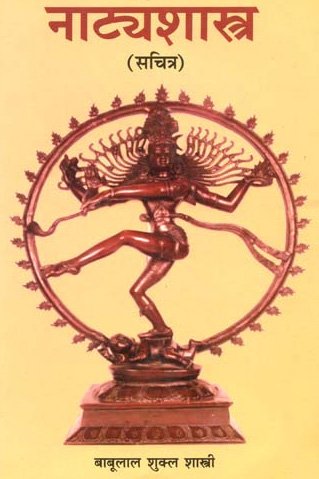
Natyashastra (नाट्यशास्त्र, nāṭyaśāstra) refers to both the ancient Indian tradition (shastra) of performing arts, (natya—theatrics, drama, dance, music), as well as the name of a Sanskrit work dealing with these subjects. It also teaches the rules for composing Dramatic plays (nataka), construction and performance of Theater, and Poetic works (kavya).
Pancaratra (worship of Nārāyaṇa)
Source: archive.org: Isvara Samhita Vol 1Kapila (कपिल) refers to one of the various Vibhava manifestations according to the Īśvarasaṃhitā 24.216-217.—Accordingly, “one shall meditate upon that Kapila, the storehouse of lustre, whose complexion is like the colour of smokeless live charcoal, having the conch and a garland of lotus seeds, having the complexion of blossomed red lotus, the sūtras of the soul of gods and others and having the palm offering security”.
These Vibhavas (e.g., Kapila) represent the third of the five-fold manifestation of the Supreme Consciousness the Pāñcarātrins believe in.
Source: Shodhganga: Iconographical representations of Śiva (pancaratra)Kāpila (कापिल) or Kāpilasaṃhitā is the name of a Vaiṣṇava Āgama scripture, classified as a tāmasa type of the Muniprokta group of Pāñcarātra Āgamas. The vaiṣṇavāgamas represent one of the three classes of āgamas (traditionally communicated wisdom).—Texts of the Pāñcara Āgamas are divided in to two sects. It is believed that Lord Vāsudeva revealed the first group of texts which are called Divya and the next group is called Muniprokta which are further divided in to three viz. a. Sāttvika. b. Rājasa. c. Tāmasa (e.g., Kāpila-saṃhitā).
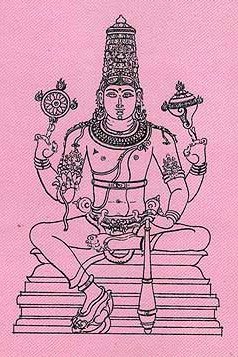
Pancaratra (पाञ्चरात्र, pāñcarātra) represents a tradition of Hinduism where Narayana is revered and worshipped. Closeley related to Vaishnavism, the Pancaratra literature includes various Agamas and tantras incorporating many Vaishnava philosophies.
Vedanta (school of philosophy)
Source: Shodhganga: Siva Gita A Critical StudyKapila (कपिल) or Kapilagītā refers to one of the sixty-four Gītās commonly referred to in Hindu scriptures.—Gītā is the name given to certain sacred writings in verse (often in the form of a dialogue) which are devoted to the exposition of particular religious and theosophical doctrines. Most of these Gītās [i.e., Kapila-gītā] originate from the Mahābhārata or the various Purāṇas.
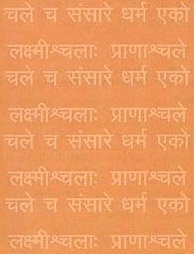
Vedanta (वेदान्त, vedānta) refers to a school of orthodox Hindu philosophy (astika), drawing its subject-matter from the Upanishads. There are a number of sub-schools of Vedanta, however all of them expound on the basic teaching of the ultimate reality (brahman) and liberation (moksha) of the individual soul (atman).
Shaktism (Shakta philosophy)
Source: Google Books: Manthanabhairavatantram1) Kapilā (कपिला) refers to a “brown cow”, according to the Ṣaṭsāhasrasaṃhitā, an expansion of the Kubjikāmatatantra: the earliest popular and most authoritative Tantra of the Kubjikā cult.—Accordingly, “[...] One should make a level canopy [i.e., maṇḍapa] measuring sixteen (handspans) in a frightening forest, [...] O fair-faced one, one should then smear that place with the dung of a brown cow [i.e., kapilā-gomaya] mixed with liquor. (The place) should abound with the fragrance of perfumed water and be fumigated with sandalwood and aloe. [...]”.
2) Kapila (कपिल) is the name of the Youth (vaṭuka) associated with Jālandhara, one of the sacred seats (pīṭha), according to the Ṣaṭsāhasrasaṃhitā, an expansion of the Kubjikāmatatantra: the earliest popular and most authoritative Tantra of the Kubjikā cult.—
3) Kapila (कपिल) refers to one of the eight Servants (ceṭa-aṣṭaka) associated with Tisrapīṭha (located in the ‘end of sound’—nādānta), according to the Manthānabhairavatantra, a vast sprawling work that belongs to a corpus of Tantric texts concerned with the worship of the goddess Kubjikā.—[...] The eight Servants (ceṭāṣṭaka): Caṇḍākṣa, Lampaṭa, Kṛṣṇa, Vikṛta, Bhāsurānana, Kapila, Kālaka, Bhramara.
4) Kapilā (कपिला) refers to one of the thirty-two Bhairavīs (also Dūtis) embodying the syllables of the goddess’s Vidyā, according to the Manthānabhairavatantra.—The thirty-two Bhairavīs [i.e., Kapilā] are the consorts of the Bhairavas presiding over the sonic energies of the thirty-two syllables of her Vidyā.

Shakta (शाक्त, śākta) or Shaktism (śāktism) represents a tradition of Hinduism where the Goddess (Devi) is revered and worshipped. Shakta literature includes a range of scriptures, including various Agamas and Tantras, although its roots may be traced back to the Vedas.
Jyotisha (astronomy and astrology)
Source: Wisdom Library: Brihat Samhita by Varahamihira1) Kapila (कपिल) was the author of the Sāṃkhya Philosophy.
2) Kapila (कपिल) refers to a country belonging to “Nairṛtī (south-western division)” classified under the constellations of Svāti, Viśākhā and Anurādhā, according to the system of Kūrmavibhāga, according to the Bṛhatsaṃhitā (chapter 14), an encyclopedic Sanskrit work written by Varāhamihira mainly focusing on the science of ancient Indian astronomy astronomy (Jyotiṣa).—Accordingly, “The countries of the Earth beginning from the centre of Bhāratavarṣa and going round the east, south-east, south, etc., are divided into 9 divisions corresponding to the 27 lunar asterisms at the rate of 3 for each division and beginning from Kṛttikā. The constellations of Svāti, Viśākhā and Anurādhā represent the south-western division consisting of [i.e., Kapila] [...]”.

Jyotisha (ज्योतिष, jyotiṣa or jyotish) refers to ‘astronomy’ or “Vedic astrology” and represents the fifth of the six Vedangas (additional sciences to be studied along with the Vedas). Jyotisha concerns itself with the study and prediction of the movements of celestial bodies, in order to calculate the auspicious time for rituals and ceremonies.
Kavya (poetry)
Source: Brill: Śaivism and the Tantric Traditions (kavya)Kapila (कपिल) refers to “tawny (hair)”, according to Bāṇa’s Kādambarī (p. 224-228).—Accordingly, “[Going ahead a little, he then sees that the Goddess Caṇḍikā] was enclosed by a door made from the ivory of wild elephants, as yellowish-white as fragments of ketakī filaments, and an iron architrave bearing an ornamental garland of black iron mirrors surrounded by a row of red yak tail whisks resembling a garland of Śabara heads horrific with tawny hair (kapila-keśa-bhīṣaṇā)”.

Kavya (काव्य, kavya) refers to Sanskrit poetry, a popular ancient Indian tradition of literature. There have been many Sanskrit poets over the ages, hailing from ancient India and beyond. This topic includes mahakavya, or ‘epic poetry’ and natya, or ‘dramatic poetry’.
Ganitashastra (Mathematics and Algebra)
Source: archive.org: Hindu MathematicsKapila (कपिल) or Kapilaka refers to the “tawny color” which were used as symbols for the unknowns, according to the principles of Bījagaṇita (“algebra” or ‘science of calculation’), according to Gaṇita-śāstra, ancient Indian mathematics and astronomy.—Āryabhaṭa I (499) very probably used coloured shots to represent unknowns. Brahmagupta (628) in the Brāhmasphuṭasiddhānta mentions varṇa as the symbols of unknowns. As he has not attempted in any way to explain this method of symbolism, it appears that the method was already very familiar. [...] In the case of more unknowns, it is usual to denote the first yāvattāvat and the remaining ones by alphabets or colours [e.g., kapila].—Cf. Pṛthūdakasvāmī (860) in his commentary on the Brāhmasphuṭasiddhānta by Brahmagupta (628) and Bhāskara II in the Bījagaṇita.
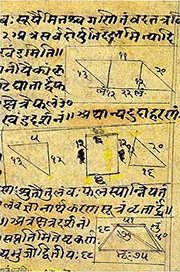
Ganitashastra (शिल्पशास्त्र, gaṇitaśāstra) refers to the ancient Indian science of mathematics, algebra, number theory, arithmetic, etc. Closely allied with astronomy, both were commonly taught and studied in universities, even since the 1st millennium BCE. Ganita-shastra also includes ritualistic math-books such as the Shulba-sutras.
Shaivism (Shaiva philosophy)
Source: SOAS University of London: Protective Rites in the Netra TantraKapila (कपिल) refers to a form of Viṣṇu, according to the Netratantra of Kṣemarāja: a Śaiva text from the 9th century in which Śiva (Bhairava) teaches Pārvatī topics such as metaphysics, cosmology, and soteriology.—Accordingly, [verse 13.1-9, while describing the appearance and worship of Viṣṇu]—“Or, [the Mantrin] worships a very handsome, eight-armed, yellow Deva. [...] He remembers [Viṣṇu’s] many forms. Thus, he thinks [of him] with a collection of many faces, many weapons and [many] arms [i.e., the cosmic Viṣṇu], reclining, taking a wife, joined with Lakṣmī, alone, [as] Narasiṃha, Varāha, or Vāmana, Kapila, or an honorable man, unadorned, or even without parts. [...]”.

Shaiva (शैव, śaiva) or Shaivism (śaivism) represents a tradition of Hinduism worshiping Shiva as the supreme being. Closely related to Shaktism, Shaiva literature includes a range of scriptures, including Tantras, while the root of this tradition may be traced back to the ancient Vedas.
Shilpashastra (iconography)
Source: Shodhganga: Elements of Art and Architecture in the Trtiyakhanda of the Visnudharmottarapurana (shilpa)Kapila (कपिल) refers to a “tawny complexion” and is associated with Messengers, which follows specific guidelines in the tradition of ancient Indian Painting (citra), according to the Viṣṇudharmottarapurāṇa, an ancient Sanskrit text which (being encyclopedic in nature) deals with a variety of cultural topics such as arts, architecture, music, grammar and astronomy.—The body complexion of an elephant rider and a messenger should be śyāma i.e., dark and kapila i.e., tawny in a picture respectively. Thus the Viṣṇudharmottarapurāṇa establishes the fact that even in the pictures; the people belonging to different class and profession [e.g., messengers with a kapila-complexion] were projected with specific attire so that general people can equate the picture with the practical character.

Shilpashastra (शिल्पशास्त्र, śilpaśāstra) represents the ancient Indian science (shastra) of creative arts (shilpa) such as sculpture, iconography and painting. Closely related to Vastushastra (architecture), they often share the same literature.
General definition (in Hinduism)
Source: Apam Napat: Indian MythologyThe great sage Kapila had chosen the netherworld to perform a terrible penance. At this time, the king Sagara had been performing the Ashwamedha (horse) sacrifice, but the sacrifical horse had wandered away. As the horse had strayed near the hermitage of sage Kapila, the 60,000 sons of Sagara came there in search of it.
The din caused by the arrival disturbed the sage, but he still did not open his eyes. When the sons of Sagara saw that the horse was there, they mistakenly assumed that Kapila was responsible for its theft. They started insulting the sage. At last, the sage could not bear it any longer. He opened his in wrath. Such was the potency of his gaze, that all the sons of Sagara were burned to ashes on the spot. (Some accounts say that a few of them escaped.)
Source: WikiPedia: HinduismKapila (कपिल ऋषि): A Vedic sage credited as one of the founders of the Samkhya school of philosophy. He is prominent in the Bhagavata Purana, which features a theistic version of his Samkhya philosophy.
In Buddhism
Theravada (major branch of Buddhism)
Source: Pali Kanon: Pali Proper Names1. Kapila - Father of Pippali manava, who is better known as Maha Kassapa. ThagA.ii.142; but see ThagA., p.73, verses 56, 57.
2. Kapila - A brahmin, the Bodhisatta born as the chaplain of Upacara, king of Cetiya. The king had promised the post of chaplain to his friend Korakalamba, Kapilas younger brother, and when reminded of his promise, undertook to recover it from Kapilas son who had been given the appointment at Kapilas request. The king, in spite of Kapilas warning, attempted to fulfil his promise by lying, and, as a result, he was swallowed up in Avici. The kings five sons thereupon sought Kapilas protection, and at his advice they left Ceti and founded five cities: Hatthipura, Assapura, Sihapura, Uttarapancala, and Daddarapura (J.iii.454ff).
Kapila is sometimes called Kapilatapasa (J.v.273) and Kapila isi (J.v.267). His encounter with the Cetiya king is evidently a famous legend, and is often referred to. E.g., in the Sankicca Jataka (J.v.267).
3. Kapila - A brahmin, the Bodhisatta. When the sons of Okkaka went into voluntary exile and were looking for a spot on which to found a city, they came upon Kapila in his hermitage in Himava by the side of a lake. He was versed in the science of Bhumicala, and was, therefore, acquainted with the qualities associated with various sites. He knew that any city built on the site of his hermitage would become the capital of Jambudipa and that its inhabitants would be invincible. He therefore advised them to found a settlement there. They followed his advice and named the settlement Kapilavatthu after him (q.v.). A hermitage was built near it for the use of Kapila. DA.i.259f; MT.132f; SnA.ii.353; see also Mtu.i.348ff
4. Kapila - A monk. He was the younger brother of Sodhana, his mother being Sadhini and his sister Tapana. The whole family entered the Order of Kassapa Buddha; Sodhana learnt meditation and became an arahant. Kapila learnt the three Pitakas and, intoxicated with his learning, disagreed with everybody, right or wrong. He would heed no admonition, and followed a life of evil conduct in which he was followed by his mother and sister. One day, when Kapila was reciting the Patimokkha, none of the other monks gave the responses, and in anger he declared that there was neither Dhamma nor Vinaya. Thus he put obstacles in the way of religion, and was reborn in Avici.
Later he was born in Aciravati as a fish, Kapilamaccha. Some fishermen, having caught him, took him to the king of Kosala. At the fish was of golden hue, the king took him to the Buddha, desiring an explanation of his colour. When the fish opened his mouth the whole of Jetavana stank. The Buddha questioned the fish and made him confess his sins. Struck with remorse, the fish died and was reborn once more in hell. DhA.iv.37ff; SnA.ii.305f; SA.ii.152; see also UdA.179f;
Theravāda is a major branch of Buddhism having the the Pali canon (tipitaka) as their canonical literature, which includes the vinaya-pitaka (monastic rules), the sutta-pitaka (Buddhist sermons) and the abhidhamma-pitaka (philosophy and psychology).
Mahayana (major branch of Buddhism)
Source: archive.org: Bulletin of the French School of the Far East (volume 5)Kapila (कपिल) is the name of a Yakṣa appointed as one of the Divine protector deities of Cīnasthāna, according to chapter 17 of the Candragarbha: the 55th section of the Mahāsaṃnipāta-sūtra, a large compilation of Sūtras (texts) in Mahāyāna Buddhism partly available in Sanskrit, Tibetan and Chinese.—In the Candragarbhasūtra, the Bhagavat invites all classes of Gods and Deities to protect the Law [dharma?] and the faithful in their respective kingdoms of Jambudvīpa [e.g., the Yakṣa Kapila in Cīnasthāna], resembling the time of the past Buddhas.
Source: De Gruyter: A Buddhist Ritual Manual on AgricultureKapila (कपिल) refers to “brownish (cow dung)”, according to the Vajratuṇḍasamayakalparāja, an ancient Buddhist ritual manual on agriculture from the 5th-century (or earlier), containing various instructions for the Sangha to provide agriculture-related services to laypeople including rain-making, weather control and crop protection.—Accordingly, [As the Bhagavān said]: “Now I shall teach the offering manual which is auspicious and can bring about any effect. [...] There should be four Nāgas made of brownish cow dung (kapila-gomaya) in the four corners of the maṇḍalaka. Stakes made of khadira wood should be driven into the ground over their heart completely. The mantra should be recited 108 times. [...]”.

Mahayana (महायान, mahāyāna) is a major branch of Buddhism focusing on the path of a Bodhisattva (spiritual aspirants/ enlightened beings). Extant literature is vast and primarely composed in the Sanskrit language. There are many sūtras of which some of the earliest are the various Prajñāpāramitā sūtras.
In Jainism
General definition (in Jainism)
Source: archive.org: Trisastisalakapurusacaritra1) Kapila (कपिल) is the son of Kapilā and Dharaṇījaṭa from Acalagrāma, according to chapter 5.1 [śāntinātha-caritra] of Hemacandra’s 11th century Triṣaṣṭiśalākāpuruṣacaritra: an ancient Sanskrit epic poem narrating the history and legends of sixty-three illustrious persons in Jainism.—Accordingly: “[...] The Brāhman also had a slave-girl, Kapilā, and he enjoyed pleasure with her also for a long time. Verily, the senses are difficult to subdue. To him enjoying her at will in turn, Kapilā bore a son, Kapila. The Brahman, himself, modest, taught the Vedas and their supplements with their esoteric meanings to his sons borne by Yaśobhadrā. Kapila, who was extremely intelligent, listened in silence and became thoroughly conversant with the ocean of Vedas. [...]”.
2) Kapila (कपिल) is the name of a Brāhman from Aruṇagrāma, according to the Jain Ramayana and chapter 7.5 [The kidnapping of Sītā].
3) Kapila (कपिल) is the name of a Brāhman from Rājagṛha whose two sons were known as Vinoda and Ramaṇa, according to chapter 7.8 [The abandonment of Sītā].

Jainism is an Indian religion of Dharma whose doctrine revolves around harmlessness (ahimsa) towards every living being. The two major branches (Digambara and Svetambara) of Jainism stimulate self-control (or, shramana, ‘self-reliance’) and spiritual development through a path of peace for the soul to progess to the ultimate goal.
India history and geography
Source: archive.org: Personal and geographical names in the Gupta inscriptionsKapila (कपिल) is an example of a name based on color heritge mentioned in the Gupta inscriptions. The Gupta empire (r. 3rd-century CE), founded by Śrī Gupta, covered much of ancient India and embraced the Dharmic religions such as Hinduism, Buddhism and Jainism. Derivation of personal names (e.g., Kapila) during the rule of the Guptas followed patterns such as tribes, places, rivers and mountains.
Source: archive.org: Ceylon Branch of the Royal Asiatic Society 1963Kapila or Kapilavastu is the name of an ancient building that once existed near Polonnaruva (Polonnaruwa), Ceylon (Sri Lanka).—Parakkamabāhu I also built:—(i) Kapila or Kapilavastu-vihāra; (ii) Dakṣiṇārāma; (iii) Pacchimārāma; (iv) the Suluvādenige of gold; (v) Purvārāma; (vi) Atubadalena-vihāra; (vii) Isipatana-vihāra in the Rājavesibhujaṅga suburb; (viii) Kusinārā-vihāra in the Sīhapura suburb; (ix) Veluvana-vihāra in the Vijita suburb; and (x) between the Palace and the 3 suburbs, at each gāvuta (about 2miles), a vihāra with Sermon and Image Houses.
Source: Cologne Digital Sanskrit Dictionaries: Indian Epigraphical GlossaryKapilā.—(BL), a kind of cow. Note: kapilā is defined in the “Indian epigraphical glossary” as it can be found on ancient inscriptions commonly written in Sanskrit, Prakrit or Dravidian languages.

The history of India traces the identification of countries, villages, towns and other regions of India, as well as mythology, zoology, royal dynasties, rulers, tribes, local festivities and traditions and regional languages. Ancient India enjoyed religious freedom and encourages the path of Dharma, a concept common to Buddhism, Hinduism, and Jainism.
Biology (plants and animals)
Source: Wisdom Library: Local Names of Plants and DrugsKapila [কপিল] in the Bengali language is the name of a plant identified with Garuga pinnata from the Burseraceae (Torchwood) family. For the possible medicinal usage of kapila, you can check this page for potential sources and references, although be aware that any some or none of the side-effects may not be mentioned here, wether they be harmful or beneficial to health.
Source: Google Books: CRC World Dictionary (Regional names)1) Kapila in India is the name of a plant defined with Aloe vera in various botanical sources. This page contains potential references in Ayurveda, modern medicine, and other folk traditions or local practices It has the synonym Aloe vera var. littoralis J. König ex Baker (among others).
2) Kapila is also identified with Dalbergia sissoo It has the synonym Amerimnon sissoo Kuntze (etc.).
3) Kapila is also identified with Phoenix sylvestris It has the synonym Elate versicolor Salisb. (etc.).
Example references for further research on medicinal uses or toxicity (see latin names for full list):
· The Gardeners Dictionary (1768)
· Revisio Generum Plantarum (1891)
· Tabl. École Bot. (1804)
· Flora Aegyptiaco-Arabica (1775)
· Species Plantarum (1753)
· Nomenclator Botanicus (1840)
If you are looking for specific details regarding Kapila, for example extract dosage, health benefits, diet and recipes, chemical composition, pregnancy safety, side effects, have a look at these references.

This sections includes definitions from the five kingdoms of living things: Animals, Plants, Fungi, Protists and Monera. It will include both the official binomial nomenclature (scientific names usually in Latin) as well as regional spellings and variants.
Languages of India and abroad
Pali-English dictionary
Source: BuddhaSasana: Concise Pali-English Dictionarykapila : (adj.) tawny. (m.), 1. tawny colour; 2. name of a sage.
Source: Sutta: The Pali Text Society's Pali-English DictionaryKapila, (adj.) (Sk. kapila, cp. kapi) brown, tawny, reddish, of hair & beard VvA. 222; °ā f. a brown cow DhA. IV, 153. (Page 187)

Pali is the language of the Tipiṭaka, which is the sacred canon of Theravāda Buddhism and contains much of the Buddha’s speech. Closeley related to Sanskrit, both languages are used interchangeably between religions.
Marathi-English dictionary
Source: DDSA: The Molesworth Marathi and English Dictionarykapila (कपिल).—a S pop. kapilā a Tawny.
--- OR ---
kapilā (कपिला).—f (S) A certain fabulous cow. 2 A cow wholly of one color. Used with the adjective before it, as kāḷī-tāmbaḍī-pāṇḍharī-ka0 3 A cow gen. Ex. mājhē gharīṃ pāñca ka0 āhēta. 4 The red powder of certain dried flowers. Used in dyeing. Disting. into kapilā & kapilī of which kapilī is the better. 5 Applied also to kāva or red ochre.
Marathi is an Indo-European language having over 70 million native speakers people in (predominantly) Maharashtra India. Marathi, like many other Indo-Aryan languages, evolved from early forms of Prakrit, which itself is a subset of Sanskrit, one of the most ancient languages of the world.
Sanskrit dictionary
Source: DDSA: The practical Sanskrit-English dictionaryKapila (कपिल).—a. [kapi-lac]
1) Tawny, reddish; वाताय कपिला विद्युत् (vātāya kapilā vidyut) Mahābhārata on P.II.3.13.
2) Having tawny hairs; नोद्वेहेत्कपिलां कन्याम् (nodvehetkapilāṃ kanyām) Manusmṛti 3.8. (Kull. = kapilakeśā).
-laḥ 1 Name of a great sage. [He reduced to ashes 6 sons of Sagara, who while searching for the sacrificial horse of their father taken away by Indra, fell in with him and accused him of having stolen it (see Uttararāmacarita 1.23.). He is also said to have been the founder of the Sāṅkhya system of philosophy.] ऋषि प्रसूतं कपिलं यस्तमग्रे ज्ञानैर्बिभर्ति (ṛṣi prasūtaṃ kapilaṃ yastamagre jñānairbibharti) Śāṅk Bhāṣ. on Bād. Sūtras 2.1; सिद्धानां कपिलो मुनिः (siddhānāṃ kapilo muniḥ) Bhagavadgītā (Bombay) 1.26.
2) A dog.
3) Benzoin.
4) Incense.
5) A form or fire.
6) The tawny colour.
7) Impure benzoin.
8) Name of the sun.
9) Name of a country.
1) One of the incarnation of Viṣṇu.
-lā 1 A brown cow; कपिला चेत्तारयति भूयश्चासप्तमं कुलम् (kapilā cettārayati bhūyaścāsaptamaṃ kulam) Y.1.25.
2) A kind of perfume.
3) A kind of timber.
4) The common leech.
5) Name of the female elephant of the south east.
--- OR ---
Kāpila (कापिल).—a. (-lī f.)
1) Peculiar or belonging to Kapila.
2) Taught by, or derived from, Kapila; योग- शास्त्रं च निखिलं कापिलं चैव भारत (yoga- śāstraṃ ca nikhilaṃ kāpilaṃ caiva bhārata) Mahābhārata (Bombay) 12.325.4.
-laḥ 1 A follower of the Sāṅkhya system of philosophy propounded by Kapila.
2) Tawny colour.
Source: Cologne Digital Sanskrit Dictionaries: Edgerton Buddhist Hybrid Sanskrit DictionaryKapila (कपिल).—name of a yakṣa (in Sanskrit of a nāga, inter alia): Suvarṇabhāsottamasūtra 161.13 (verse; Piṅgala-Kapilas, text, supported by Tibetan according to Nobel, but most mss. Piṅgala alone, without K., and the one which has K. reads Piṇḍola-Kapilas; one name or two?); Mahā-Māyūrī 15, 30, 53; 235.12.
--- OR ---
Kapilā (कपिला).—(1) name of a kiṃnara maid: Kāraṇḍavvūha 6.5; (2) name of a rākṣasī: Mahā-Māyūrī 240.7; 243.8.
Source: Cologne Digital Sanskrit Dictionaries: Shabda-Sagara Sanskrit-English DictionaryKapila (कपिल).—mfn.
(-laḥ-lā-laṃ) Tawny. m.
(-laḥ) 1. Kapila, a celebrated Muni or saint, the founder of the Sankhya system of phlilosophy: the son of Kerddama by Devahuti, and according to some, an avatar of Vishnu. 2. A title of Agni the deity of fire. 3. A dog. 4. Tawny, (in colour.) f.
(-lā) 1. The female elephant of the south-east. 2. A kind of Sisu, or timber tree so called: see śiṃśapā. 3. A sort of perfume: see reṇukā 4. The aloe plant. 5. A fabulous cow, celebrated in the Puranas. 6. The common leech. E. kam to desire, ilac Unadi affix, and pa substituted for ma; or kapi a monkey, and la to take, &c. being of such a colour.
--- OR ---
Kāpila (कापिल).—mfn.
(-laḥ-lī-laṃ) Of a tawny colour. m.
(-laḥ) 1. A follower of the Sankhya system of philosophy. E. kapila the founder of the school, and aṇ affix. 2. Tawny, (the colour.) E. aṇ pleonastic added to kapila, q. v.
Source: Cologne Digital Sanskrit Dictionaries: Benfey Sanskrit-English DictionaryKapila (कपिल).—[kapi + la], I. adj., f. lā, Reddish, [Mānavadharmaśāstra] 3, 8 (with reddish hair), [Rāmāyaṇa] 6, 3, 2. Ii. m. The name of a sage, Mahābhārata 3, 1896; of a mountain, [Bhāgavata-Purāṇa, (ed. Burnouf.)] 5, 16, 27. Iii. f. lā. 1. A reddish or brown cow, Mahābhārata 3, 8067. 2. A proper name, Mahābhārata 1, 2520. 3. The name of a river, Mahābhārata 3, 14233.
--- OR ---
Kāpila (कापिल).—i. e. kapila + a, adj. Referring or peculiar to Kapila, [Rāmāyaṇa] 1, 41, 3; Mahābhārata 12, 12218.
Source: Cologne Digital Sanskrit Dictionaries: Cappeller Sanskrit-English DictionaryKapila (कपिल).—[adjective] brown, reddish; [masculine] [Name] of an ancient sage etc.; [feminine] ā a brown cow or a kind of leech.
--- OR ---
Kāpila (कापिल).—[feminine] ī pertaining to or coming from Kapila; [masculine] a follower of Kapila.
Source: Cologne Digital Sanskrit Dictionaries: Aufrecht Catalogus Catalogorum1) Kapila (कपिल) as mentioned in Aufrecht’s Catalogus Catalogorum:—Sāṃkhyapravacana or Sāṃkhyasūtra. Tattvasamāsa (?). Hall. 2. NW. 384. Vyāsaprabhākara (?). Gu. 5.
2) Kapila (कपिल):—Quoted as a medical author by Vāgbhaṭa in Sūtrasthāna ch. 20.
Source: Cologne Digital Sanskrit Dictionaries: Monier-Williams Sanskrit-English Dictionary1) Kapila (कपिल):—[from kapi] mf(ā)n. (√kam, [Uṇādi-sūtra i, 56]; more probably connected with kapi, [Boehtlingk & Roth’s Sanskrit-Woerterbuch]), ‘monkey-coloured’, brown, tawny, reddish, [Ṛg-veda x, 27, 16; Śatapatha-brāhmaṇa; Rāmāyaṇa] etc.
2) [v.s. ...] red-haired, [Manu-smṛti iii, 8]
3) [v.s. ...] m. the brown or tawny or reddish colour, [Suśruta]
4) [v.s. ...] a kind of mouse
5) [v.s. ...] a kind of ape, [Kathāsaritsāgara]
6) [v.s. ...] a (brown) dog, [cf. Lexicographers, esp. such as amarasiṃha, halāyudha, hemacandra, etc.]
7) [v.s. ...] incense, [cf. Lexicographers, esp. such as amarasiṃha, halāyudha, hemacandra, etc.]
8) [v.s. ...] Name of an ancient sage (identified by some with Viṣṇu and considered as the founder of the Sāṃkhya system of philosophy), [Mahābhārata; Bhagavad-gītā] etc.
9) [v.s. ...] Name of several other men
10) [v.s. ...] of a Dānava, [Harivaṃśa 197; Bhāgavata-purāṇa]
11) [v.s. ...] of a Nāga, [Mahābhārata iii, 8010; Harivaṃśa] etc.
12) [v.s. ...] of a Varṣa in Kuśa-dvīpa, [Viṣṇu-purāṇa ii, 4, 37]
13) [v.s. ...] of several mountains
14) [v.s. ...] a form of fire, [Mahābhārata iii, 14197]
15) [v.s. ...] Name of the sun, [Mahābhārata iii, 154]
16) [v.s. ...] m. [plural] Name of a people, [Varāha-mihira’s Bṛhat-saṃhitā]
17) [v.s. ...] m. of the Brāhmans in Śālmala-dvīpa, [Viṣṇu-purāṇa ii, 4, 31]
18) Kapilā (कपिला):—[from kapila > kapi] f. a brown cow, [Yājñavalkya i, 205; Mahābhārata] etc.
19) [v.s. ...] a fabulous cow celebrated in the Purāṇas, [Horace H. Wilson]
20) [v.s. ...] a kind of leech, [Suśruta i, 40, 20]
21) [v.s. ...] a kind of ant, [Suśruta ii, 296, 12]
22) [v.s. ...] Dalbergia Sissoo, [cf. Lexicographers, esp. such as amarasiṃha, halāyudha, hemacandra, etc.]
23) [v.s. ...] Aloe Perfoliata, [cf. Lexicographers, esp. such as amarasiṃha, halāyudha, hemacandra, etc.]
24) [v.s. ...] a sort of perfume, [cf. Lexicographers, esp. such as amarasiṃha, halāyudha, hemacandra, etc.]
25) [v.s. ...] a kind of medicinal substance, [cf. Lexicographers, esp. such as amarasiṃha, halāyudha, hemacandra, etc.]
26) [v.s. ...] a kind of brass, [cf. Lexicographers, esp. such as amarasiṃha, halāyudha, hemacandra, etc.]
27) [v.s. ...] Name of a daughter of Dakṣa, [Mahābhārata]
28) [v.s. ...] of a Kiṃnara woman, [Kāraṇḍa-vyūha]
29) [v.s. ...] of a river, [Mahābhārata iii, 14233; Viṣṇu-purāṇa]
30) [v.s. ...] Name of the female of the elephant Puṇḍarīka (q.v.), [cf. Lexicographers, esp. such as amarasiṃha, halāyudha, hemacandra, etc.]
31) Kāpila (कापिल):—mf(ī)n. ([from] kapila), peculiar or belonging to or derived from Kapila, [Mahābhārata; Rāmāyaṇa]
32) of a tawny or brownish colour, [cf. Lexicographers, esp. such as amarasiṃha, halāyudha, hemacandra, etc.]
33) m. a follower of the teacher Kapila, follower of the Sāṅkhya system of philosophy (founded by Kapila), [Mahābhārata xii; Kāvyādarśa; Harṣacarita]
34) a tawny colour, [cf. Lexicographers, esp. such as amarasiṃha, halāyudha, hemacandra, etc.]
35) n. Name of [work] by Kapila (= sāṅkhya, or according to others an Upa-purāṇa), [Pañcarātra]
36) (with tīrtha) Name of a Tīrtha, [Skanda-purāṇa; Kapila-saṃhitā, kapila-purāṇa]
37) mfn. derived from a brownish cow, [Parāśara-smṛti]
Source: Cologne Digital Sanskrit Dictionaries: Yates Sanskrit-English Dictionary1) Kapila (कपिल):—[(laḥ-lā-laṃ) a.] Tawny. (laḥ) 1. m. Kapila, a celebrated sage, the founder of the Sāṃkhya philosophy; Agni; a dog. f. (lā) The female elephant of the southeast; sisu tree; a perfume; a leech; an aloe; a fabulous cow.
2) Kāpila (कापिल):—(laḥ) 1. m. A follower of the Sāṃkhya system. a. Tawny.
Source: DDSA: Paia-sadda-mahannavo; a comprehensive Prakrit Hindi dictionary (S)Kapila (कपिल) in the Sanskrit language is related to the Prakrit words: Kavila, Kāvila.
[Sanskrit to German]
Sanskrit, also spelled संस्कृतम् (saṃskṛtam), is an ancient language of India commonly seen as the grandmother of the Indo-European language family (even English!). Closely allied with Prakrit and Pali, Sanskrit is more exhaustive in both grammar and terms and has the most extensive collection of literature in the world, greatly surpassing its sister-languages Greek and Latin.
Hindi dictionary
Source: DDSA: A practical Hindi-English dictionaryKapilā (कपिला):—(nf) a white or grey-coloured cow, harmless cow; gentle woman; a harmless person.
...
Kannada-English dictionary
Source: Alar: Kannada-English corpusKapila (ಕಪಿಲ):—[adjective] of orange-brown or yellow-brown colour; tawny.
--- OR ---
Kapila (ಕಪಿಲ):—
1) [noun] the orange-brown or yellow-brown colour.
2) [noun] name of a great sage (about 500 B.C.) who is said to have founded the Sāṃkhya system of philosophy.
3) [noun] a kind of medicinal substance.
--- OR ---
Kāpila (ಕಾಪಿಲ):—
1) [adjective] peculiar, particular, belonging, taught, propounded by to sage Kapila the propounder of Sāṃkhya system of philosophy.
2) [adjective] of or related to, derived from the Sāṃkhya system of philosophy.
--- OR ---
Kāpila (ಕಾಪಿಲ):—
1) [noun] one of the six major systems of Hindu philosophy, involving two ultimate, completely distinct, principles of matter and spirit, but not recognising any god or lord, mainly propounded by the sage Kapila of about 500B.C.
2) [noun] a follower of that system.
3) [noun] the orange or yellow brown colour.
Kannada is a Dravidian language (as opposed to the Indo-European language family) mainly spoken in the southwestern region of India.
See also (Relevant definitions)
Starts with (+79): Kapila Maccha, Kapila Maccha Vatthu, Kapila Nagara, Kapila podi, Kapila Sutta, Kapila Vihara, Kapila-kalayupam, Kapila-poti, Kapila-sinsapa, Kapilaarangu, Kapilabali, Kapilabhadra, Kapilabhashya, Kapilacam, Kapilacarya, Kapilacatti, Kapilacharya, Kapiladamodara, Kapiladana, Kapiladanapaddhati.
Ends with: Akapila, Atikapila, Bhadrakapila, Karabhakapila, Mukapila, Parikapila, PindolaKapila.
Full-text (+1006): Kapileya, Kapilavastu, Kapilya, Kapilarshi, Dadhinadi, Kapilashashthi, Kapilashva, Kapilasamhita, Tribhuvaneshvaralinga, Auddalaka, Kapilahrada, Devipadadvaya, Kapilahvaya, Payomritatirtha, Kapilacarya, Kapilam, Kapilapati, Kavila, Kapiladraksha, Abhiceshta.
Relevant text
Search found 170 books and stories containing Kapila, Kapilā, Kāpila; (plurals include: Kapilas, Kapilās, Kāpilas). You can also click to the full overview containing English textual excerpts. Below are direct links for the most relevant articles:
The Skanda Purana (by G. V. Tagare)
Chapter 343 - Importance of (Observing the Vow of) Kapilā-Ṣaṣṭhī < [Section 1 - Prabhāsa-kṣetra-māhātmya]
Chapter 22 - The Origin of Viśalyā < [Section 3 - Revā-khaṇḍa]
Chapter 88 - The Greatness of Kapileśvara (kapila-īśvara-tīrtha) < [Section 3 - Revā-khaṇḍa]
Rig Veda (translation and commentary) (by H. H. Wilson)
Manusmriti with the Commentary of Medhatithi (by Ganganatha Jha)
Verse 3.8 < [Section III - Marriageable Girls]
Verse 4.130 < [Section XIV - Other Duties]
Verse 9.333 < [Section XLIII - Duties of the Vaiśya and the Śūdra]
The Linga Purana (by J. L. Shastri)
Chapter 34 - Praise of the Yogin (yogi-praśaṃsānāma) < [Section 1 - Uttarabhāga]
Chapter 46 - Dvīpas and their Lords < [Section 1 - Uttarabhāga]
Chapter 7 - The esoteric secret of Śiva < [Section 1 - Uttarabhāga]
Garga Samhita (English) (by Danavir Goswami)
Verse 1.13.18 < [Chapter 13 - The Liberation of Pūtanā]
Verse 2.10.9 < [Chapter 10 - Description of Śrī Kṛṣṇa’s Herding the Cows]
Verse 6.15.25 < [Chapter 15 - The Glories of Nṛga-kūpa and Gopī-bhūmi]
Sahitya-kaumudi by Baladeva Vidyabhushana (by Gaurapada Dāsa)
Text 7.127 < [Chapter 7 - Literary Faults]
Related products
